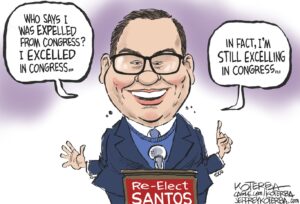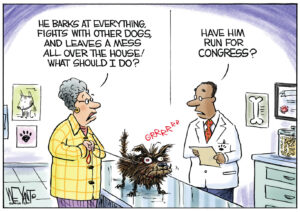The Biggest Problem With Congress? There Is No Middle Anymore
Republican political consultants dissected the recent battle over Obamacare and the government shutdown and concluded that consensus is hard to find in the House because the political middle has disappeared. Blame gerrymandering, big bucks campaigning, and voters. Yep, we got the government we asked for. Well, that some people asked for.
A political analysis by the Republican-aligned consulting firm Public Opinion Strategies dives into the congressional meltdown over Obamacare and the budget, and lays bare the structural dysfunction at hand. In 1982, 344 members of the House fell into a loosely defined political middle, based on cross-over voting histories. In 2012, only 11 members fell into that middle, a tidal shift in the course of a generation.
As Chris Cillizza points out at The Washington Post, this means in the short term that chances for a meaningful, forward-looking compromise on anything will be awfully hard to achieve.
In 1982, there were 344 Members whose voting records fell somewhere between the most conservative voting Democrat and the most liberal voting Republican in the House. Thirty years later, there were 11. That means that in 1982 the centrists — or at least those who by voting record were somewhere near the middle of their respective parties — comprised 79 percent of the House. In 2012 they made up 2.5 percent of the House. So, yeah.
There are any number of reasons for this disappearance — partisan gerrymandering and closed primaries being the two most obvious — but the numbers are unbelievably stark, particularly when you consider that roughly 30 percent of the electorate consider themselves political independents. (According to exit polling, 29 percent of people named themselves independents in the 2008 and 2012 presidential elections.) … The political incentive to make deals simply does not exist in the House and, in fact, there is almost always a disincentive for members to work across the aisle.
An additional problem is that nearly half of the members of the House entered office during the Obama administration, which means “there is little retained long-term institutional knowledge,” according to the Public Opinion Strategies presentation.
The consequences: “A substantial drop in confidence about the direction of the country.” Satisfaction with the way the nation is being run is much lower than it was as the Watergate crisis came to a head, and at 18 percent, is a percentage point lower than after the debt ceiling negotiations of two years ago, an earlier nadir in D.C. politicking. Consumer confidence has dropped as well, dragging down spending and slowing the economic recovery. Some 60 percent of voters say they would like to replace every member of Congress. Though with the gerrymandered system in place, the replacements would be more like clones.
Yet there is a glimmer of good news: The number of people who support increasing the size of government — the antithesis of the national Republican agenda — is growing. And the GOP’s favorable rating is at a historic low. But the report also notes that what riles voters today could well be forgotten by the next congressional election cycle.
It seems more likely people will remember. Elsewhere in the report, the analysts say, “do not expect much change in how Congress functions and the level of likely paralysis that continues to lay ahead.” So with Congress continuing to remind us how off the rails it has become, memories will still be sharp come primary season in those gerrymandered congressional districts. The question is, will the political middle reassert itself? And more importantly, can the political left make any gains against a headwind of GOP extremism?
—Posted by Scott Martelle.
Your support matters…Independent journalism is under threat and overshadowed by heavily funded mainstream media.
You can help level the playing field. Become a member.
Your tax-deductible contribution keeps us digging beneath the headlines to give you thought-provoking, investigative reporting and analysis that unearths what's really happening- without compromise.
Give today to support our courageous, independent journalists.






You need to be a supporter to comment.
There are currently no responses to this article.
Be the first to respond.